By Norma Weinberg
 All life forms need resources, and the three most important resources needed by monarchs in their annual cycle are: nectar from flowers for the adults, both in the migratory and reproductive phases; shelter and water while overwintering; and milkweeds—food for their larvae after the breeding phase.
All life forms need resources, and the three most important resources needed by monarchs in their annual cycle are: nectar from flowers for the adults, both in the migratory and reproductive phases; shelter and water while overwintering; and milkweeds—food for their larvae after the breeding phase.
Female monarchs only lay eggs on milkweed plants (Asclepias spp.) as a food source for their larvae, with a few exceptions. While there are over 100 species of milkweeds in North America, many are rare or confined to remote habitats. Still, monarchs utilize about 30 milkweed species as hosts for their larvae. The common milkweed (Asclepias syriaca) is the predominant species. Estimates are that 90% of the monarchs that overwinter in Mexico each year have fed on this species as a larva.
NECTAR PLANTS
Adult butterflies need sources of carbohydrates, amino acids, and some salts to successfully migrate and reproduce. To fulfill these needs, monarchs visit both “bee” flowers and “butterfly” flowers. Butterfly flowers, like pentas, lantanas, butterfly bushes, and butterfly weed, co-evolved with the butterflies. These plants have dilute nectars containing 10-15% dissolved solids, carbohydrates, and amino acids. Bee flowers, such as clovers and other legumes, tend to have richer nectars (20-40% dissolved solids) but little in the way of amino acids.
SHELTER AND WATER
Overwintering is all about shelter and water. Intact Oyamel fir forests, found at high elevations in the mountains of central Mexico, provide the canopy and the sources of necessary water needed by the monarchs. Here is where these butterflies come to mate.
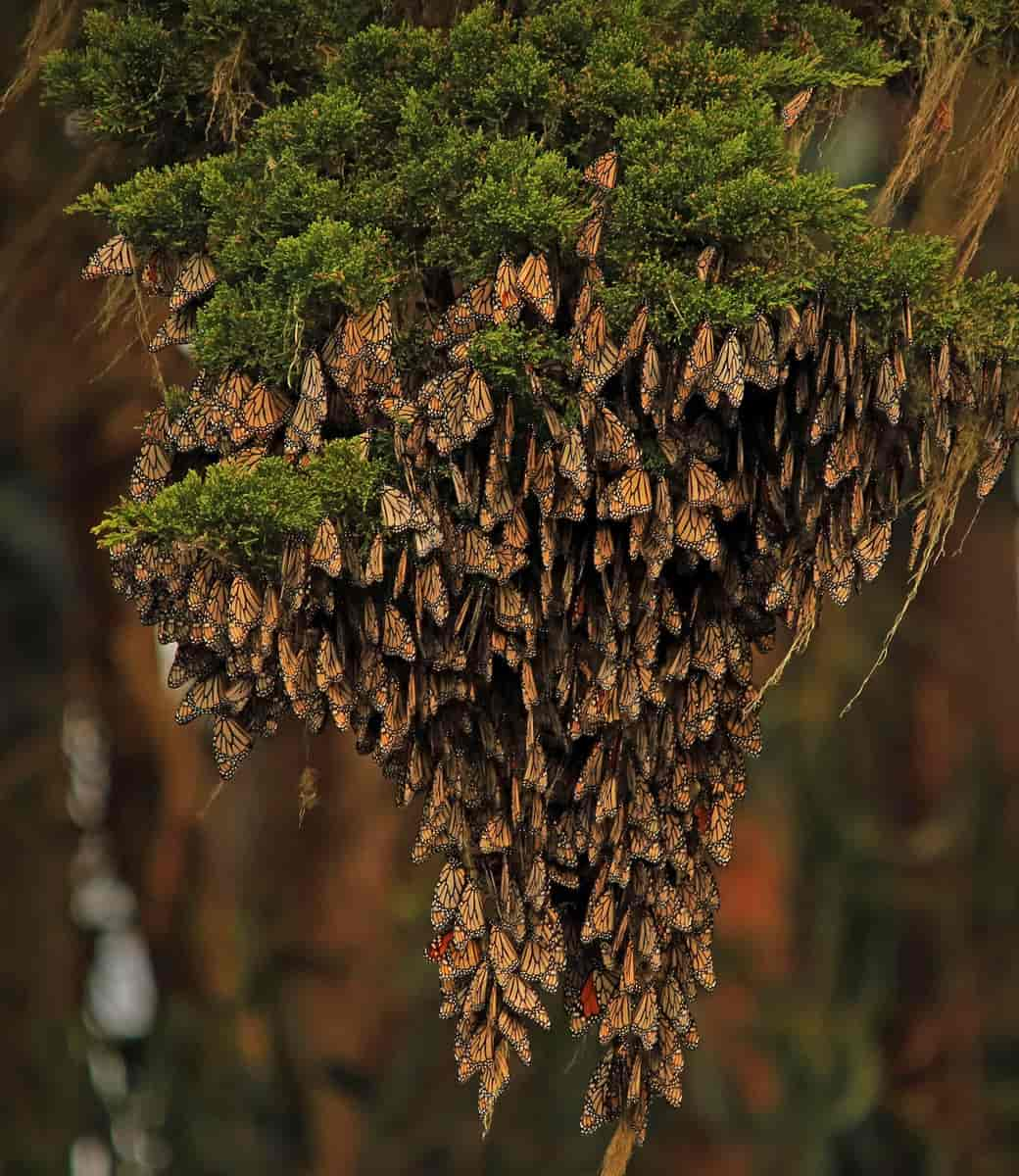 OYAMEL FORESTS AND MONARCHS
OYAMEL FORESTS AND MONARCHS
Oyamel fir trees are the dominant, and often only, tree species at the sites where monarchs come to overwinter and mate. Although monarchs cluster on numerous tree species during their migration southward, the clusters are never as dense as those seen in Mexico. Even though specific colony sites may be chosen for the microclimates they provide, the oyamel, due to its structure, seems to afford a high degree of protection. The very structure of the needles and branches allow for the formation of dense clusters, and they provide a protective canopy that insulates the butterflies from both high and low temperatures. Within dense oyamel forests, during the heart of winter, temperatures seldom exceed 65°F during the day or drop below 30°F in early morning. Unfortunately, these dynamics change as the forests are degraded, allowing both higher and lower temperatures. Protection of the structural integrity of these oyamel forests is therefore essential for the protection of the monarch migration.
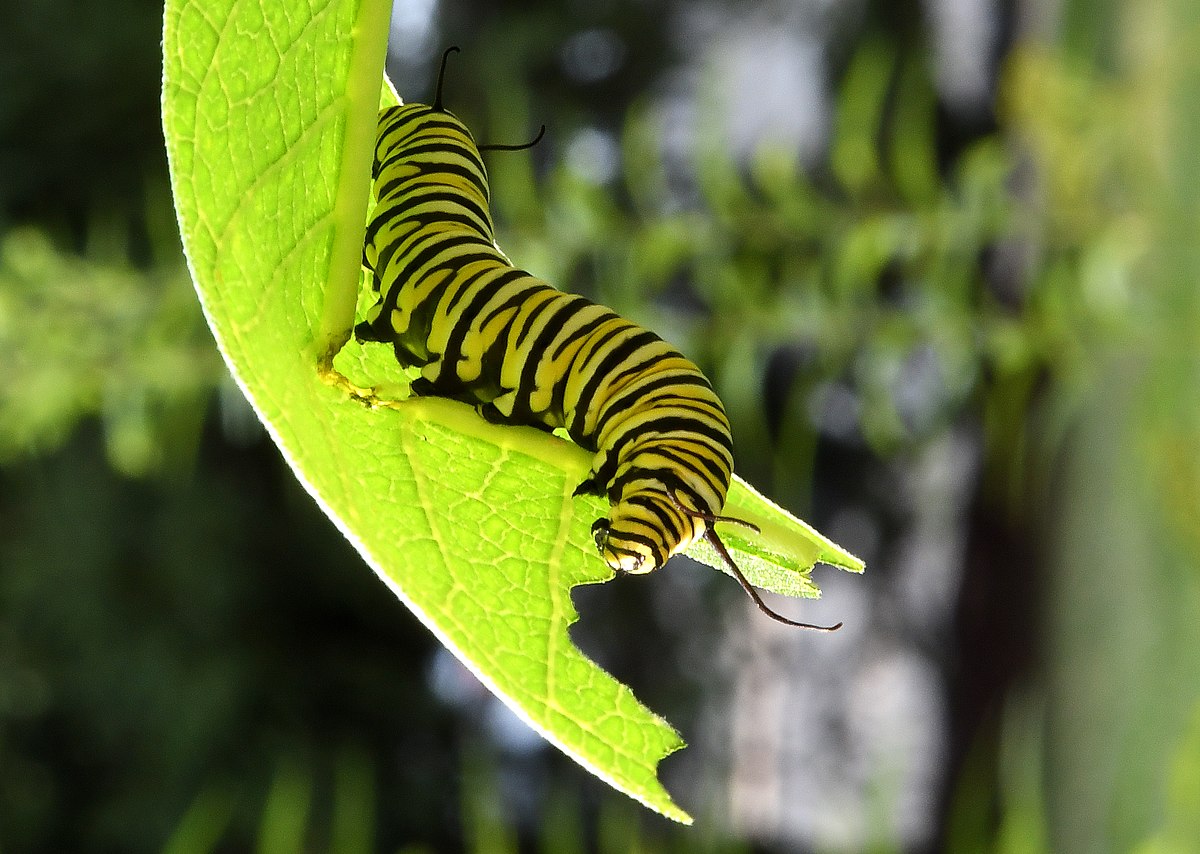 MILKWEED OFFERS PROTECTION FROM PREDATORS
MILKWEED OFFERS PROTECTION FROM PREDATORS
Milkweed needs butterflies, moths, bees, ants, and wasps for its own pollination. And monarch larvae need milkweed for food and protection. Milkweeds contain a group of compounds known as cardiac glycosides, or cardenolides. As the larvae feed on milkweeds, they acquire some of these compounds and sequester them, late in the pupal stage, into the cuticle of their developing adult body. Cardiac glycosides are toxins that are effective against many vertebrates, as they induce vomiting. A bird needs to only eat a monarch once to get the message that they are not good food items.
Most insects that incorporate toxins from noxious plants advertise their own food choice, and thus their inedibility, by being brightly colored; hence, the strongly contrasting black, orange, and white coloration of the adult monarch, and the black, yellow, and white colors of the larvae. This form of advertising is known as aposematic (or warning) coloration. Interesting how interdependent we all are for survival!
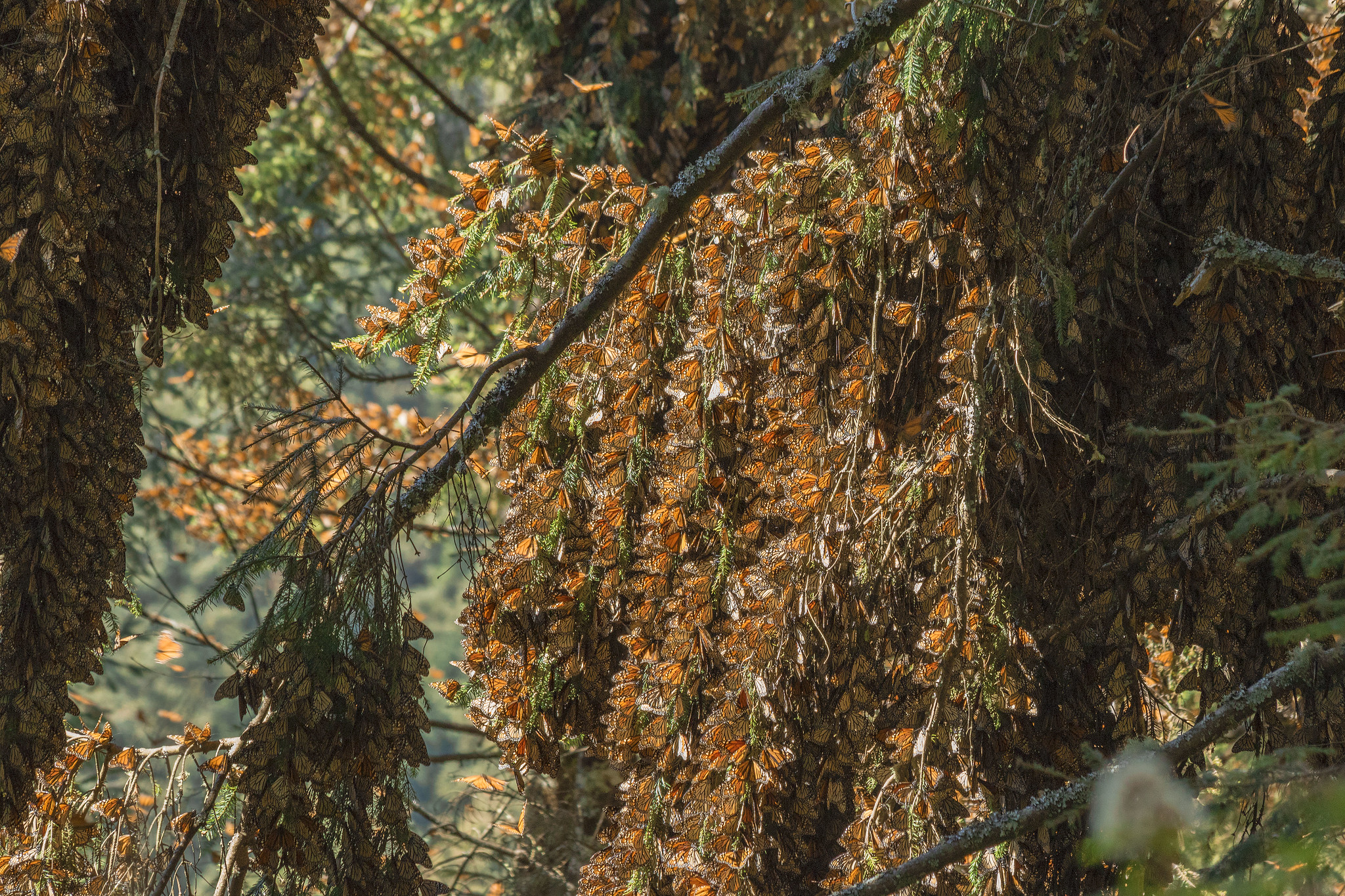 MATING BEHAVIOR
MATING BEHAVIOR
Monarch butterflies are notably promiscuous, with lifetime mating frequencies approaching eight partners for each sex. Since it is usually the sperm from the most recent mating that is used to fertilize eggs, females produce offspring that have been fathered by a series of males through their egg laying history. This high degree of multiple mating may be advantageous in that it increases the genetic variability of a female’s offspring in a highly variable (heterogeneous) environment.
EGG-LAYING
Female monarchs appear to find milkweed plants for egg-laying by sight, olfaction, and taste. They visually search for plants but will also crawl through vegetation to reach small and inconspicuous plants in the spring, evidently finding these plants through olfaction. Once a female has found a plant, she “tastes” the plant by “drumming” or touching the plant repeatedly with a special set of taste receptors located on the first pair of legs. Females seem to prefer particular milkweed species, and show a strong bias by laying eggs on young leaves and flower buds. When flying north in the spring from Mexico, females may scatter eggs over a thousand miles, thus re-establishing the breeding population to the limits of milkweed. The average female is thought to lay around 400 eggs, only a few of which survive.
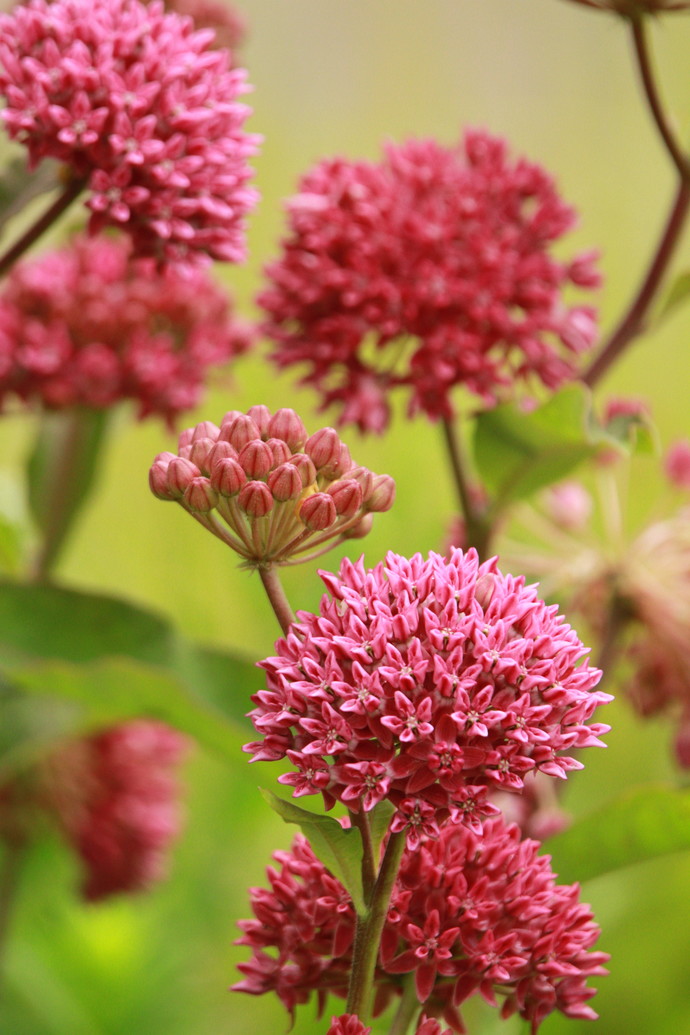 ENVIRONMENTAL FACTORS
ENVIRONMENTAL FACTORS
In the United States, 6000 acres are converted to development each day. Additionally, chemically intensive agriculture that utilizes insecticides and herbicides also affects monarchs and their milkweed hosts. Land management practices, such as frequent mowing, that favor grasses rather than flowering plants are also a factor. And, there is climate change, which poses threats to monarchs throughout their annual cycle. Sustaining the monarch migration will require the cooperation of all three countries (U.S.A., Canada, and Mexico) that are home to monarchs for some portion of the year. A recent development along these lines has been the drafting of a “North American Monarch Conservation Plan.”
WHERE DO YOU FIT IN?
As with comedy, harvesting milkweed seed is all about timing. Too soon and the seed will be immature and won’t germinate; too late and it will have either blown away or involve a flossy mess you’ll need to deal with before sowing. Here are some methods of harvesting milkweed seed, separating the truth from the fluff:
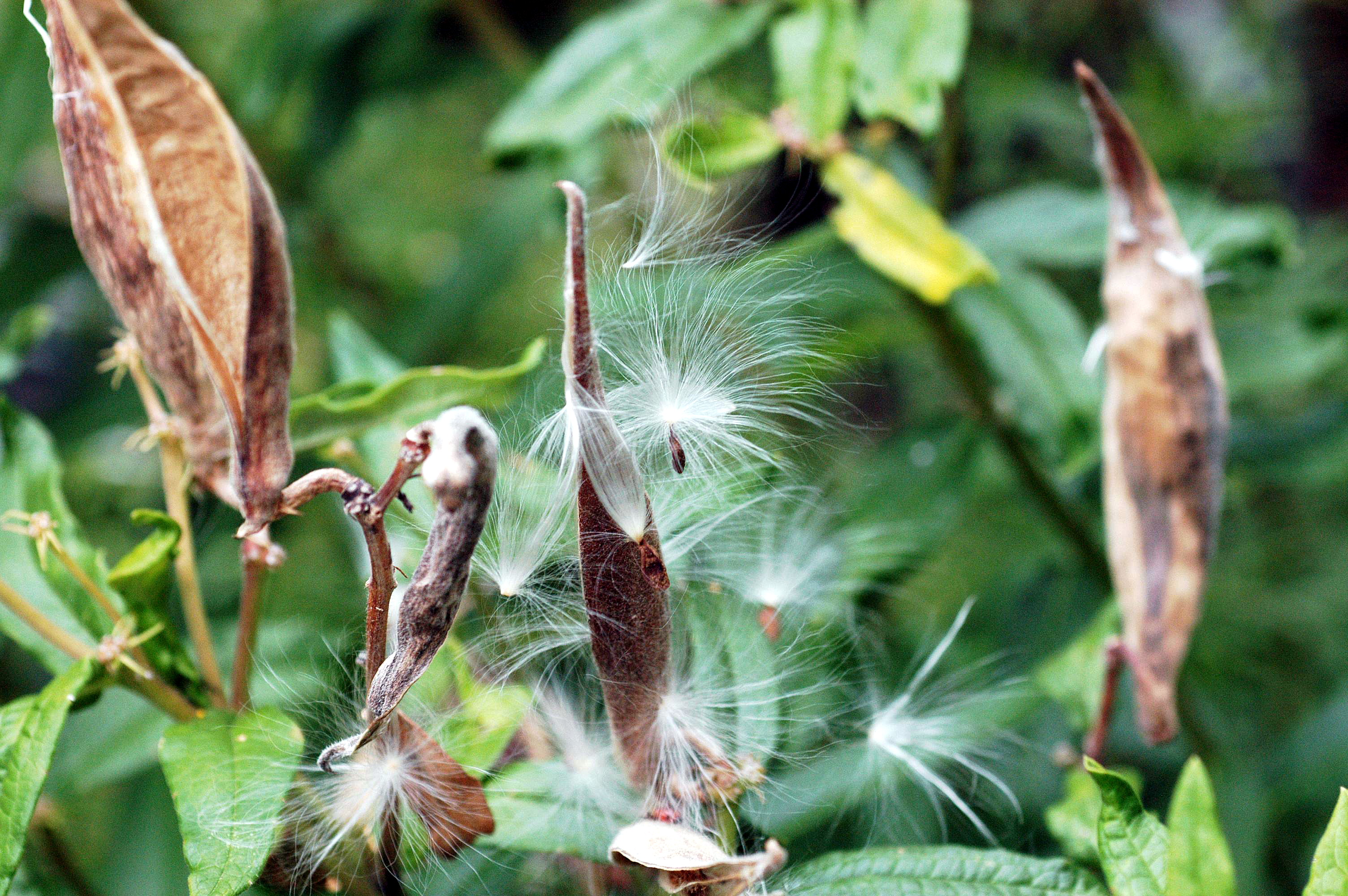 Milkweed plants produce distinct seed pods in late summer. Typically these pods are horn shaped, or otherwise long, narrow, and tubular. Pods are filled with seeds and floss, a material attached to the seed that allows it to travel on the wind, similar to dandelion seed. When the seed is ready to disperse, the floss will expand, causing the pod to burst. For those wishing to collect seed, this floss can be problematic, creating a messy barrier to gathering large amounts of viable seed. There are several options for separating the floss, but the best option is to plan your timing so that you are able to easily remove the seed as soon as it is mature, but before the silky floss has expanded. Milkweed seed should be brown and leathery when mature, though the pods themselves may still be green.
Milkweed plants produce distinct seed pods in late summer. Typically these pods are horn shaped, or otherwise long, narrow, and tubular. Pods are filled with seeds and floss, a material attached to the seed that allows it to travel on the wind, similar to dandelion seed. When the seed is ready to disperse, the floss will expand, causing the pod to burst. For those wishing to collect seed, this floss can be problematic, creating a messy barrier to gathering large amounts of viable seed. There are several options for separating the floss, but the best option is to plan your timing so that you are able to easily remove the seed as soon as it is mature, but before the silky floss has expanded. Milkweed seed should be brown and leathery when mature, though the pods themselves may still be green.
You can test an unopened pod for maturity by applying gentle pressure to the seam. If it does not open readily, the seed inside is immature. If the pod opens and the seed is dark brown in color, you may easily remove the central rib of seeds and floss in one mass, and should find it easy to separate. From here, pinch the seed mass towards the top of the cluster, and remove the seed with your other hand (the seeds should fall away easily). Move your thumb and forefinger down the mass of floss as you go, working your way down the seed mass. You should end up with a pile of seeds and a ribbon of milkweed floss that can then be discarded.
For more information visit MonarchWatch.org, and The Green Bridges Initiative sponsored by The Herb Society of America https://www.herbsociety.org/get-involved/greenbridges-initiative.html
Photo Credits: 1) A monarch caterpillar crawls on Asclepias tuberosa flowers (Chris von Kohn); 2) Asclepias speciosa (Matt Lavin); 3) Asclepias exaltata (Chris von Kohn); 4) Asclepias asperula in Red Rock Canyon, Nevada (Stan Shebs); 5) Monarchs resting on a conifer (U.S. Fish and Wildlife, Public Domain); 6) Monarch caterpillar feeds on an Asclepias syriaca leaf (USFWS Midwest Region); 7) Monarchs resting en masse (Rafael Saldaña); 8) Asclepias purpurescens (Chris von Kohn); 9) Asclepias tuberosa seeds (Chrissy Moore)
Norma Weinberg is a Master Gardener and Education Chair of the New England Unit of the Herb Society of America (NEUHSA)
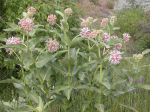
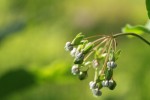
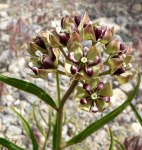
Leave a Reply